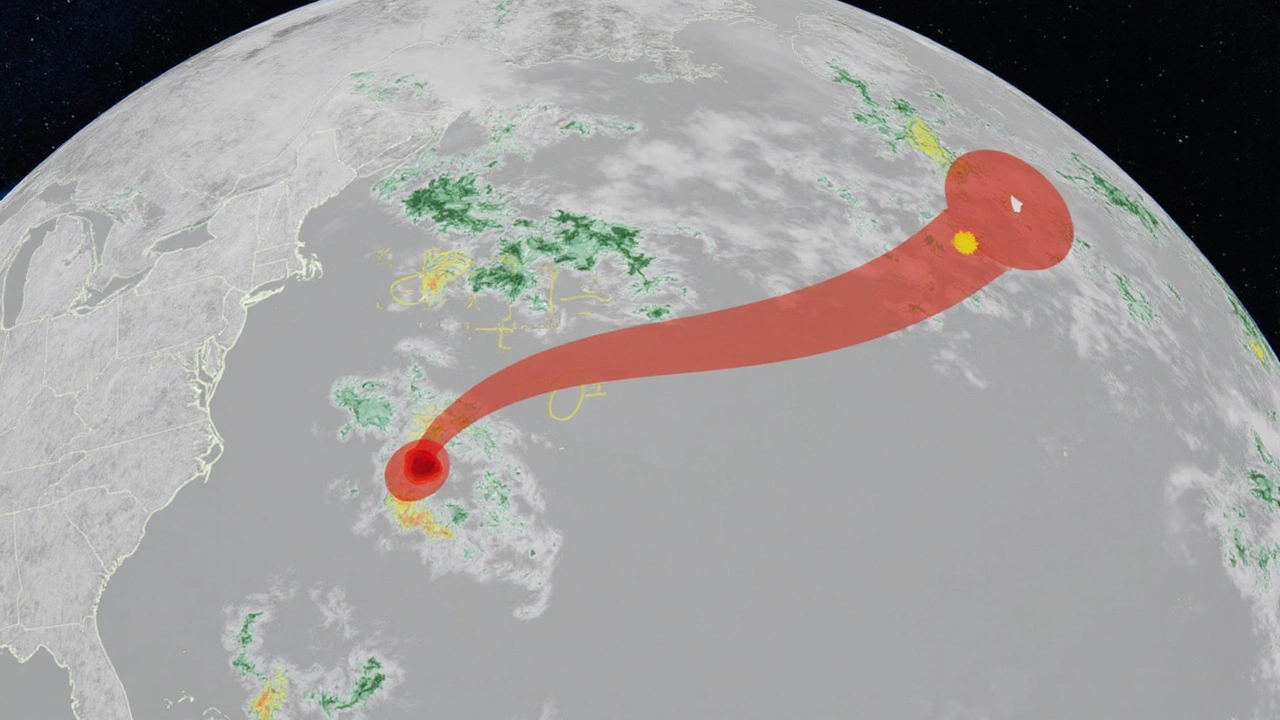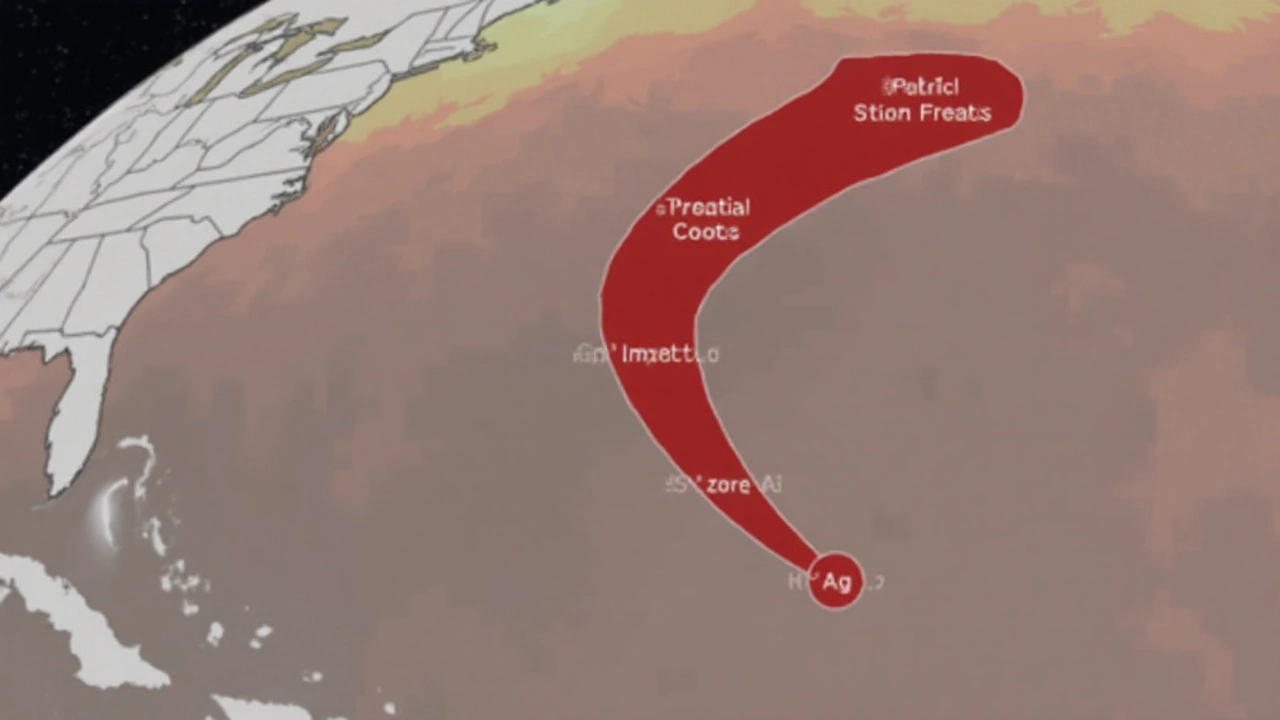What’s happening with Gabrielle right now?
Since forming earlier this week, Tropical Storm Gabrielle has started to look more like a proper cyclone. Satellite pictures show a tighter core, deeper clouds, and a budding eye‑like feature. The National Hurricane Center (NHC) is updating its forecast every six hours, and each run shows the storm gaining strength faster than expected.
Scientists point to a few key ingredients that could drive rapid intensification: warm sea surface temperatures above 28°C, low wind shear, and abundant moisture in the mid‑levels of the atmosphere. All three are present in Gabrielle’s current path across the central Atlantic, which means the storm has the fuel it needs to ramp up quickly.

Potential impacts on the U.S. East Coast
The first sign of Gabrielle’s influence is already visible in the form of higher waves. Swells ranging from 3 to 5 feet are rolling toward the Outer Banks of North Carolina, and surf reports from the National Oceanic and Atmospheric Administration (NOAA) show the swell window expanding northward. While the system is still dozens of miles offshore, these early waves can cause minor beach erosion and pose a hazard for small vessels.
Forecasters caution that if Gabrielle does become a hurricane, the wind field could extend well beyond the eye. Coastal counties from Virginia to South Carolina may see gusts between 50 and 70 mph, even if the storm stays offshore. Rainfall totals could top 4 inches in some spots, leading to flash‑flooding in low‑lying areas.
Because the exact landfall point is uncertain, emergency managers are urging residents to keep an eye on local alerts, stock up on essentials, and secure any loose items on patios or decks. Even a brush with hurricane‑strength winds can knock out power lines or damage roofs, especially on older homes.
Beyond the immediate threats, there’s a broader picture to watch. The 2025 Atlantic hurricane season has been relatively quiet so far, with only a handful of named storms. Gabrielle has the chance to become the second system of the year to reach hurricane strength, a milestone that often signals a more active second half of the season.
Meanwhile, the NHC is also tracking four potential tropical waves that could spin up into cyclones in the coming days. Historically, a cluster of systems early in the season can lead to a busy September, when the Atlantic typically peaks for storm formation.
In terms of preparation, the Federal Emergency Management Agency (FEMA) recommends a simple checklist: a battery‑powered radio, enough water for three days, non‑perishable food, and any prescription medications. If you live within a five‑mile radius of the coast, consider a evacuation plan, even if officials haven’t issued an order yet.
For the broader scientific community, Gabrielle offers a chance to study rapid intensification up close. Researchers will likely launch a hurricane hunter aircraft to fly into the storm, gathering data on wind speeds, pressure drops, and moisture content. These observations help improve future forecast models, which have historically struggled to predict sudden jumps in strength.
In short, Gabrielle is still a tropical storm on paper, but every new piece of data points toward a possible upgrade. Residents along the Atlantic seaboard should treat the situation as dynamic—check updates every few hours, follow local guidance, and be ready to act if the storm’s intensity ramps up faster than expected.
